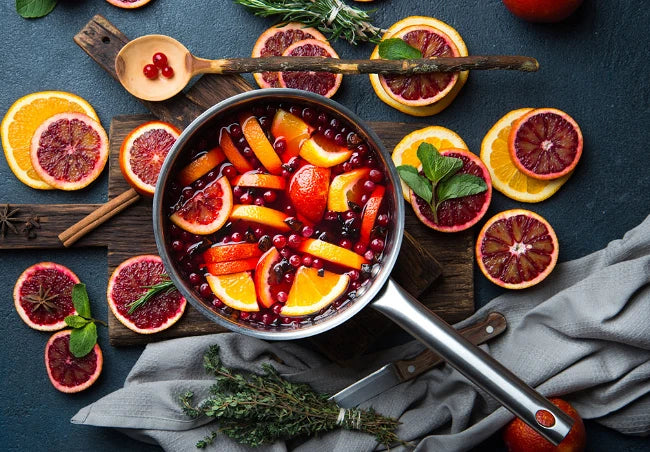
A Tale of Two Mulled Wine Recipes: Australian and European Styles
Share
As the cold winds of winter embrace us while the season starts to change and head toward spring, there is nothing quite as comforting as a steaming cup of mulled wine. This delightful beverage, with its warm blend of spices and rich flavours, has become a cherished winter tradition worldwide. In this blog post, we explore the nuances of mulled wine recipes, comparing the Australian and European styles. So, let's embark on a journey through the diverse world of mulled wine and discover the unique ingredients and preparation methods that make each recipe special.
Australian Mulled Wine: Embracing Local Flavours, are reflection of the country's vibrant and diverse culinary landscape. While the basic concept remains the same - heating red wine with spices - Australian recipes often incorporate local ingredients, adding a unique twist to this traditional drink. Popular spices like cinnamon, cloves, and star anise lend a familiar warmth to the Australian version, while native herbs like lemon myrtle and eucalyptus provide a distinctly Australian touch.
In addition to traditional red wine, Australian recipes may feature local Shiraz or Merlot to complement the indigenous spices. Some variations also include a splash of fortified wine, such as port or brandy, for an extra layer of richness.
European Mulled Wine: A Taste of Tradition The origins of mulled wine can be traced back to Europe, where the drink has been cherished for centuries as a winter elixir. European mulled wine, also known as Glühwein (Germany and Austria), Vin Chaud (France), or Glögg (Scandinavia), embodies the essence of traditional holiday celebrations and Christmas markets.
The spices used in European mulled wine are consistent across the continent, typically including cinnamon, cloves, and nutmeg. However, regional variations might introduce subtle differences, such as the addition of cardamom in Swedish Glögg or orange peel in French Vin Chaud.
The choice of wine in European recipes varies as well, with red wine being the most common, but white or rosé wine occasionally used. Some recipes may call for a specific grape variety, depending on the region's wine production.
The Art of Simmering Both Australian and European mulled wine recipes involve a gentle simmering process, where the wine and spices meld together to create a harmonious flavour profile. However, the time and temperature of simmering may differ slightly.
In Australia, the wine is often brought to a simmer but not allowed to boil, as this can compromise the delicate flavours of the native herbs and spices. On the other hand, some European recipes may simmer the wine for a longer duration, allowing the spices to infuse the wine deeply.
Mulled wine serves as a delightful bridge between cultures, uniting people around the world with its warmth and charm. Whether you opt for an Australian version with native botanicals or a traditional European Glühwein, each recipe has its own unique character that captures the spirit of winter.
So, as the nights are still chilly, embrace the art of mulled winemaking and savour the magic of this heart-warming drink. Raise your cup to a winter filled with cosy moments, festive gatherings, and the joy of two distinct mulled wine traditions coming together in perfect harmony. Cheers to the season of merriment and the joy of shared traditions!
